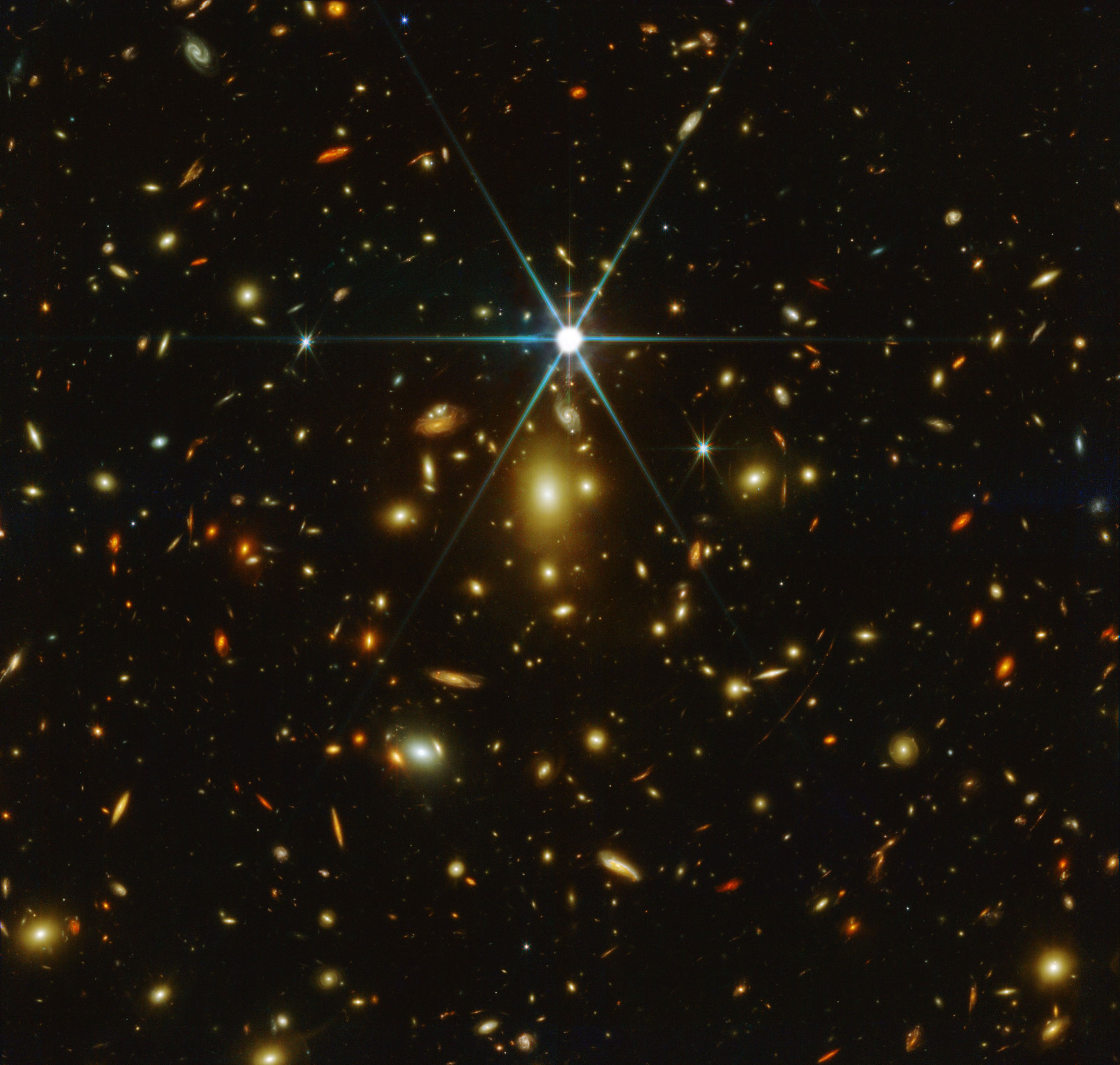The world was gobsmacked last month when the James Webb Space Telescope released its first clutch of images, showing nebulae, galactic clusters, binary stars, and more. Things have quieted down a bit since, as the telescope team begins to set about the 25 or so years of work the Webb is thought to have ahead of it. But, as Space.com reports, the telescope made news again this week, when astronomers announced that it had spotted the farthest individual star ever seen.
Named Earendel, after a character in Lord of the Rings, the star is located 12.9 billion light years from Earth, which means that Webb saw it as it looked 12.9 billion years ago, not as it looks today. The star would not have been visible at all if it weren’t for the phenomenon of gravitational lensing—the ability of large foreground objects like galaxies to bend and magnify the light streaming in from behind them.
“Nobody’s ever seen a star this highly magnified, not to mention a galaxy,” Dan Coe of the Space Telescope Science Institute in Maryland, part of the team that made the new measurements, told New Scientist.

Though sighting Earendel was an accomplishment, Webb does not get credit for discovering it. That distinction goes to its much older brother, the Hubble Space Telescope, which first spotted Earendel this past March. For Webb then, the sighting was less important for its historic value than for its engineering value—one more sign that the brand new, $10 billion observatory is living up to its sharp-eyed billing. The next step is to try and use the Webb Telescope to figure out what elements make up Earendel and the galaxy it lives in.
In the meantime, much closer to home—a scant 500 million light years away—Webb also captured the best image yet of the dramatic Cartwheel Galaxy. The galaxy’s signature shape is the result of a high speed collision that occurred long ago between a large galaxy and a smaller galaxy, which combined into the formation we see today. The bright inner ring and the larger outer ring are the telltale signs of that ancient cosmic crack-up. Two smaller, bystander galaxies are in the left side of the frame.
The new image is valuable for much more than its wow factor. NASA hopes further Webb images of the Cartwheel will reveal details both about star formation and the black hole that sits at the center of the galaxy.
More Must-Reads from TIME
- Cybersecurity Experts Are Sounding the Alarm on DOGE
- Meet the 2025 Women of the Year
- The Harsh Truth About Disability Inclusion
- Why Do More Young Adults Have Cancer?
- Colman Domingo Leads With Radical Love
- How to Get Better at Doing Things Alone
- Michelle Zauner Stares Down the Darkness
Write to Jeffrey Kluger at jeffrey.kluger@time.com